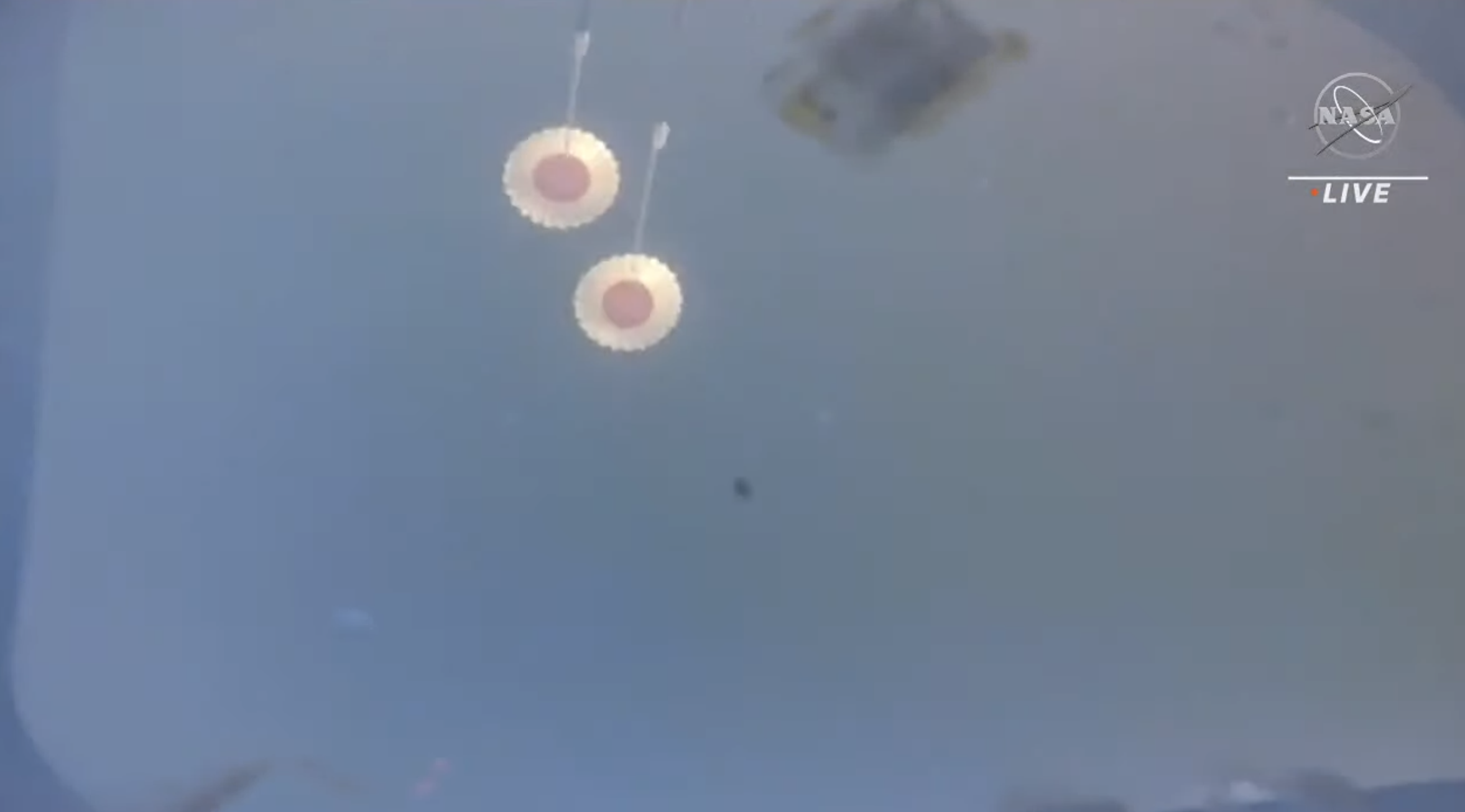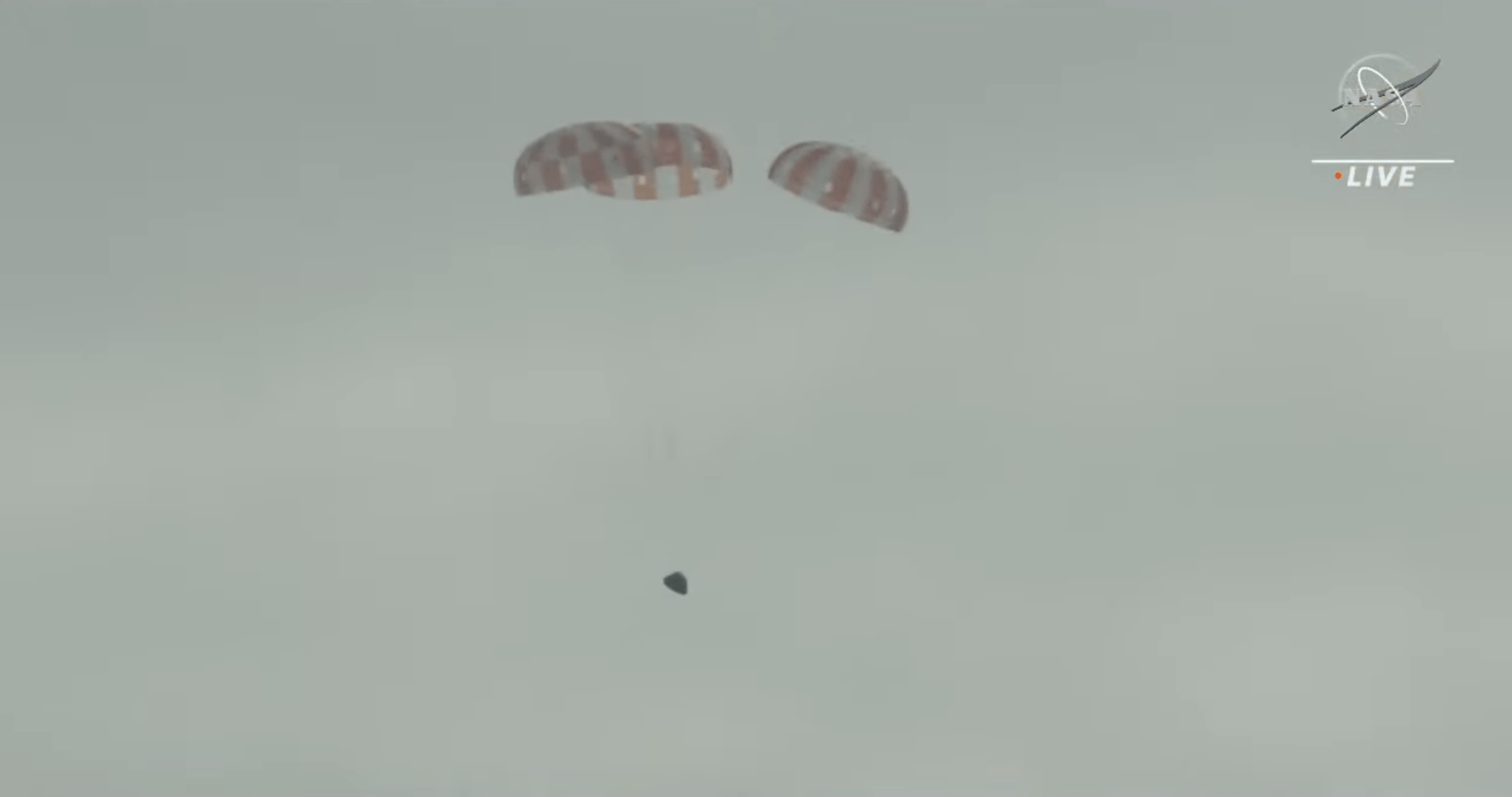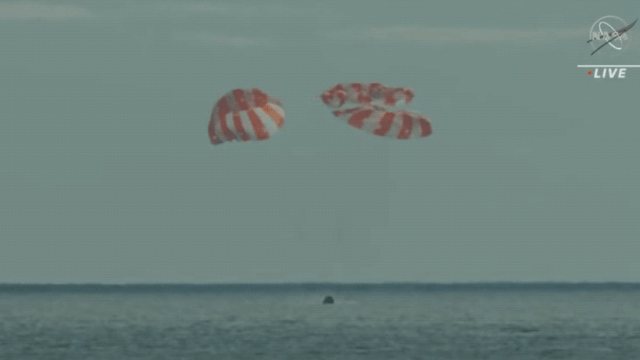The uncrewed Orion spacecraft performed a flawless splashdown in the Pacific Ocean this morning, in what is a very promising and exciting start to the Artemis era of lunar missions.
A recovery team led by NASA’s Exploration Ground Systems is in the midst of recovering the capsule, a careful process that can take upwards of five hours to complete. Orion splashed down at 12:40 pm ET (4 am AEDT) as expected, roughly 160 kilometres west of Guadalupe Island near Baja, California. The plan is for the USS John P. Murtha to deliver the capsule to a naval base in San Diego, and then for a truck to deliver it to Kennedy Space Centre in Florida, where it will undergo thorough inspections. Preliminary inspections from the helicopter indicated that the capsule is undamaged.


Today’s finale saw Orion go from 32,187 kilometres per hour down to 32 kilometres per hour during its parachute-assisted descent. That’s a rapid and dramatic reduction in speed, to say the least. NASA will want to evaluate the condition of Orion and its heat shield to make sure the system is fit for humans.

Controllers successfully regained contact with the capsule following two expected blackout periods during the skip reentry, in which Orion “bounced” off the atmosphere and temporarily returned to space before performing a second plunge. This double reentry procedure — the first ever attempted for a crew-rated spacecraft — helps to dissipate the tremendous heat endured during the return.
The entire Artemis 1 mission as a whole will be scrutinised, as the space agency makes plans for Artemis 2 — a repeat of this mission but with a crew of four astronauts on board. The Artemis program is NASA’s attempt to develop a sustained human presence in the lunar environment.

That said, the inaugural Artemis mission appears to have gone exceptionally well. The space agency is absolutely glowing about the debut performance of its gigantic Space Launch System (SLS) rocket, and Orion did exactly what it was supposed to do: journey to the Moon, enter into a distant retrograde orbit, brush close to the lunar surface, perform an exit manoeuvre, and arrive home safely and soundly.
